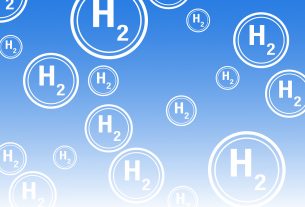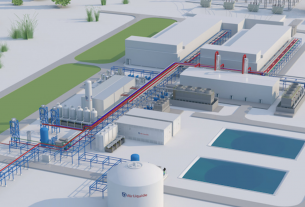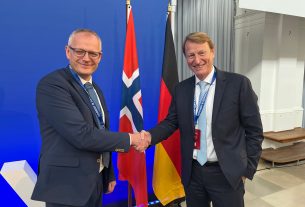The Netherlands – A new feasibility study is advancing the collaboration between the ports of Rotterdam and inland port duisport in the creation of European hydrogen chains.
In order to show that the planned hydrogen corridor between Rotterdam and duisport is already in place and in a strong position to meet the high demand for low carbon and renewable hydrogen from the industrial cluster in the Ruhr region, OCI Global, the Dutch-listed global leader in ammonia, methanol, and hydrogen, is collaborating with the ports.
According to the feasibility assessment, a significant increase in North Rhine-Westphalia’s need for low carbon hydrogen of more than 3 million tonnes annually is anticipated until 2045. More than 2.5 million tonnes of methanol are anticipated to be consumed annually, a major increase in demand. To match supply and demand and provide the clarity that is required to hasten the decision-making process for investments and subsidies, duisport and the Port of Rotterdam Authority are acting as a middleman between the governmental and corporate worlds. The hydrogen effort “Hy.Region.Rhein.Ruhr e.V.,” co-founded by duisport and now including the port of Rotterdam, supports the ports.
Infrastructure development
It will be essential to expand key infrastructure and offer suitable places in order to fulfill anticipated demand. According to the analysis, in order to meet the growing demand for green hydrogen in North Rhine-Westphalia over the next few years, the first hydrogen pipeline between the two ports should be finished by 2027. pipes for the export of CO2 and pipelines for hydrogen derivatives should come next. The first imports will be made possible by inland shipping and rail transportation, both of which will continue to be crucial components in setting up the hydrogen networks. The analysis concludes that a number of hydrogen pipes will eventually be required to provide the demand in North Rhine-Westphalia and beyond.
Since decades, pipeline links, inland cargo, trucks, and rail have connected the world’s largest inland port, duisport, with Europe’s largest seaport, the port of Rotterdam. A Memorandum of Understanding on digitalization and the energy transition was signed last year to expand the current partnership and collaboratively research the potential uses of green hydrogen, methanol, and ammonia.
Producing local hydrogen
Both ports have started developing the infrastructure required to enable the hydrogen economy. The development of tank storage capabilities for hydrogen derivatives in Duisburg is a key component of a reliable supply for the sector. The port of Duisburg will soon house a tank farm for liquid renewable fuels and raw materials like ammonia, as well as a storage facility for tank containers powered by green energy. Midway through 2025, a first hydrogen plant is expected to be built.




